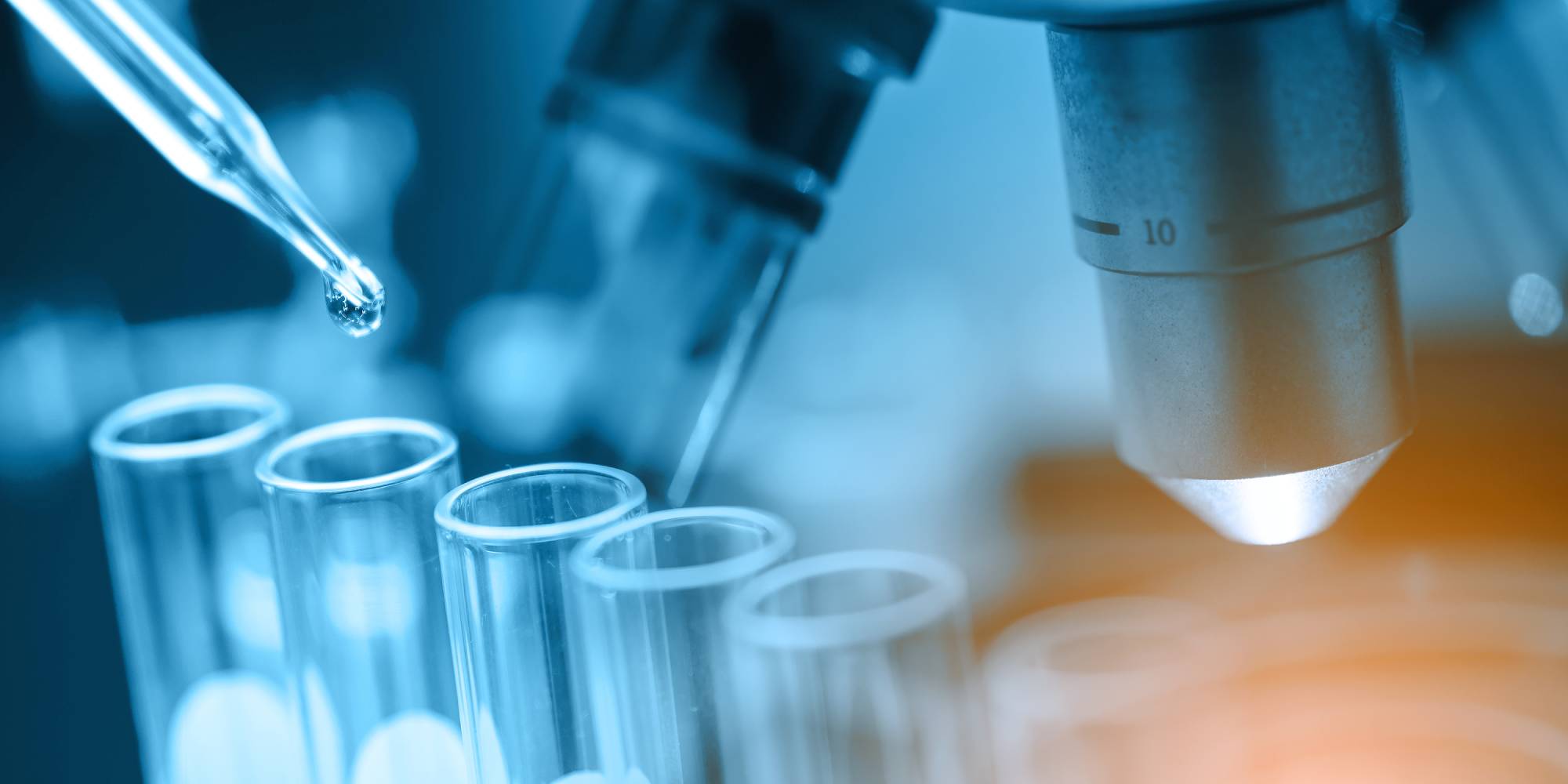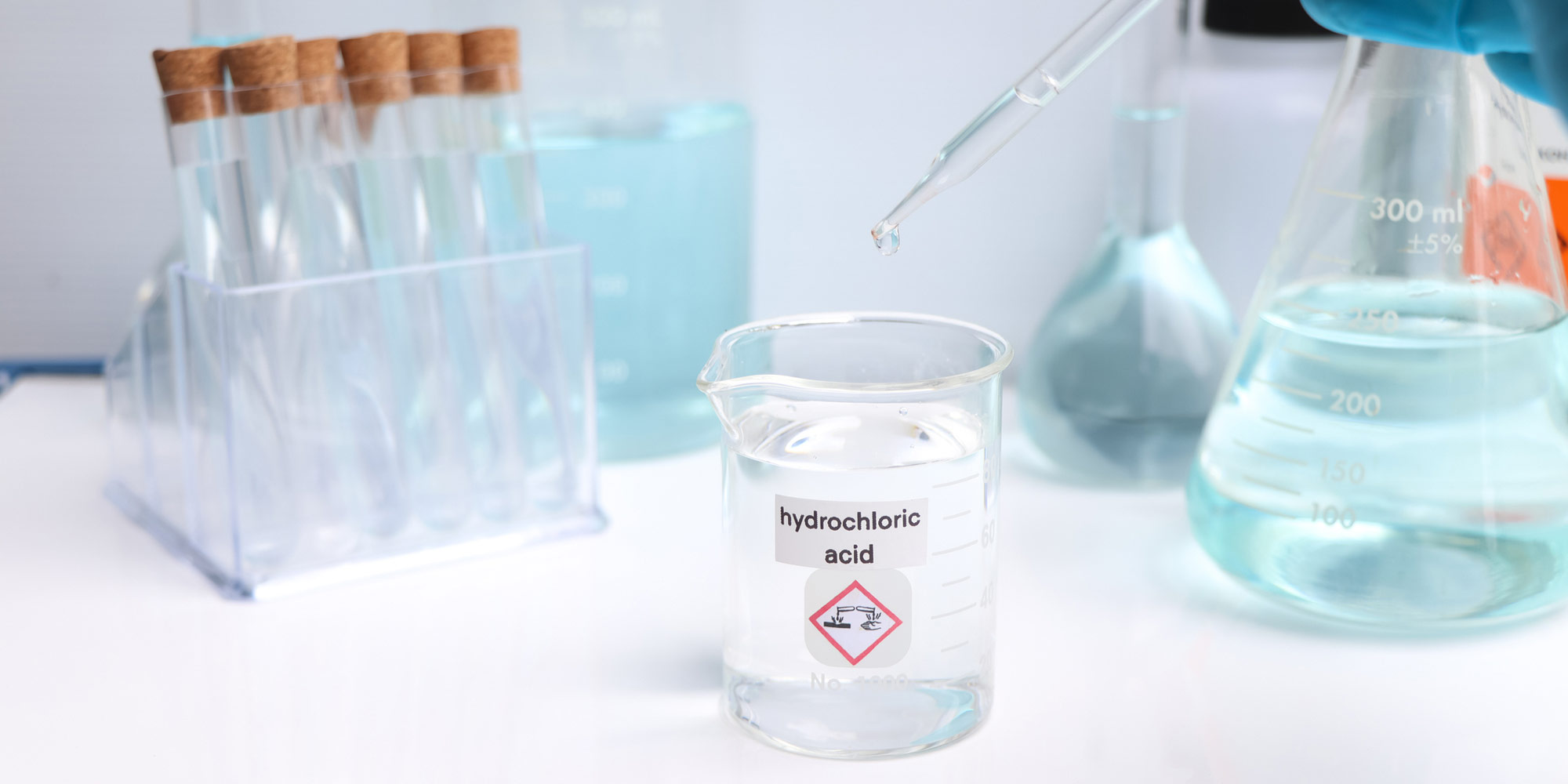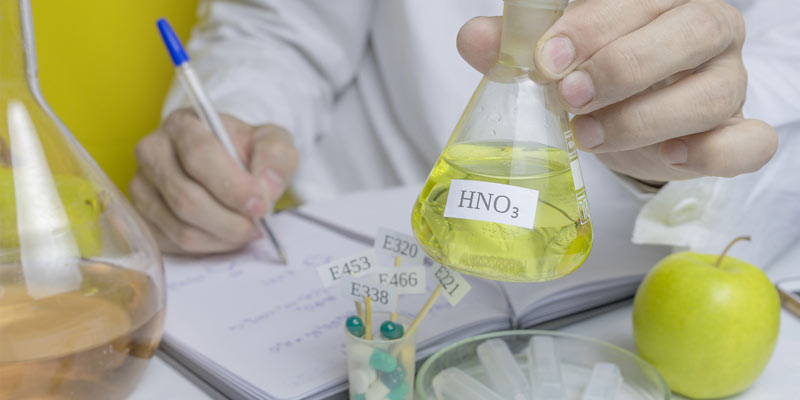Qualitative protein analysis using nitric acid
By Jillian Jastrzembski

Nitric acid can be used in the Xanthoproteic test to detect the presence of amino acids containing a benzene ring. When nitric acid reacts with aromatic amino acids like tryptophan and tyrosine, a colored compound known as a xanthoprotein is formed.










